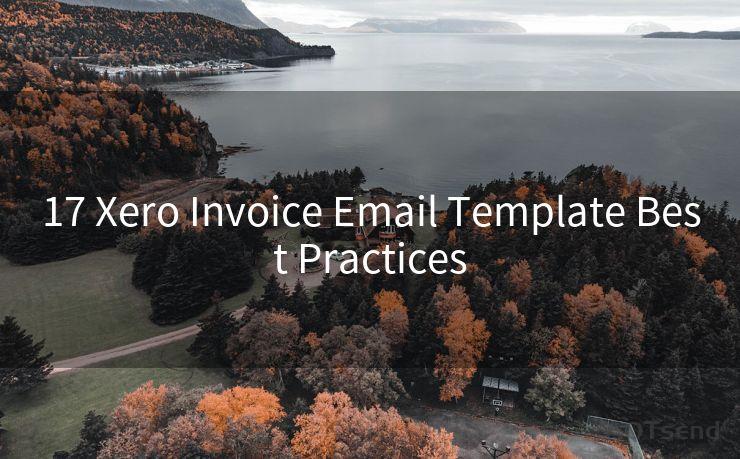17 Xero Invoice Email Template Best Practices




When it comes to invoicing, email remains a crucial communication channel between businesses and their clients. Using Xero, a popular cloud-based accounting software, you can streamline your invoicing process and enhance customer experience with well-crafted email templates. Here are 17 best practices for creating an effective Xero invoice email template that boosts customer engagement and payment promptness.
1. Clear and Professional Subject Line
Craft a subject line that's direct, informative, and professional. For example, "New Invoice #1234 from [Your Company Name]". This helps the recipient understand the email's purpose immediately.
2. Personalized Greeting
Start your email with a personalized greeting, addressing the customer by name. This adds a touch of familiarity and warmth to your communication.
3. Invoice Summary
Provide a brief summary of the invoice, including the invoice number, date, and the total amount due. This gives the customer a quick overview of their payment details.
4. Itemized List of Services or Products
Include an itemized list of the services or products provided, along with their respective costs. Clarity in billing enhances customer trust and satisfaction.
5. Payment Terms and Conditions
Specify the payment terms and conditions, including the payment deadline, accepted payment methods, and any late payment penalties. This helps to set clear expectations and avoid confusion.
6. Direct Payment Link
Include a direct payment link in your email template, allowing customers to pay their invoices conveniently online. This reduces friction in the payment process.
7. Contact Information
Provide your contact information, including a phone number and email address, in case the customer has any questions or concerns regarding the invoice.
8. Thank You Note
End your email with a genuine thank you note, appreciating the customer's business. This leaves a positive impression and encourages timely payments.
9. Mobile-Friendly Design
Ensure your email template is mobile-friendly, as many customers check their emails on the go. A responsive design ensures readability and ease of use on any device.

10. Avoid Spam Triggers
Be cautious of using words or phrases that might trigger spam filters, such as "free," "win," or "prize." This helps ensure your invoice emails reach the customer's inbox.
11. Test and Optimize
Regularly test your email template to ensure it renders correctly across different email clients and devices. Optimize as needed for maximum effectiveness.
12. Use Plain Language
Keep your language simple and straightforward, avoiding complex jargon or legalistic terms. This enhances readability and understanding.
13. Highlight Important Information
Use bolding, italics, or color to highlight critical information like the invoice number, total amount, or payment deadline. This helps the customer quickly identify key details.
14. Include a Call to Action
Include a clear call to action, such as "Pay Now" or "View Invoice," to guide the customer to the next step.
15. Brand Consistency
Maintain brand consistency in your email template by using your company's logo, colors, and font styles. This reinforces your brand identity and professionalism.
🔔🔔🔔
【AOTsend Email API】:AOTsend is a Managed Email Service for sending transactional emails. Support Email Types: reminders, authentication, confirmations, notifications, verification codes, invoices, password resets, account activations, billing statements, two-factor authentication (2FA), and one-time passwords (OTP) emails, etc. $0.28 per 1000 Emails. 99% Delivery, 98% Inbox Rate.
You might be interested in:
Why did we start the AOTsend project, Brand Story?
What is a Managed Email API, How it Works?
Best 25+ Email Marketing Platforms (Authority,Keywords&Traffic Comparison)
Best 24+ Email Marketing Service (Price, Pros&Cons Comparison)
Email APIs vs SMTP: How they Works, Any Difference?
16. Comply with Legal Requirements
Ensure your invoice email template complies with all relevant legal requirements, such as including tax information or disclaimers, if applicable.
17. Follow-Up Strategy
Have a follow-up strategy in place for invoices that remain unpaid after the due date. This could include automated reminders or personalized emails to encourage prompt payment.
By implementing these best practices, you can create a Xero invoice email template that not only streamlines your billing process but also enhances customer engagement and satisfaction. Remember to continually refine and test your template to ensure it remains effective and up to date.




Scan the QR code to access on your mobile device.
Copyright notice: This article is published by AotSend. Reproduction requires attribution.
Article Link:https://www.mailwot.com/p5928.html



